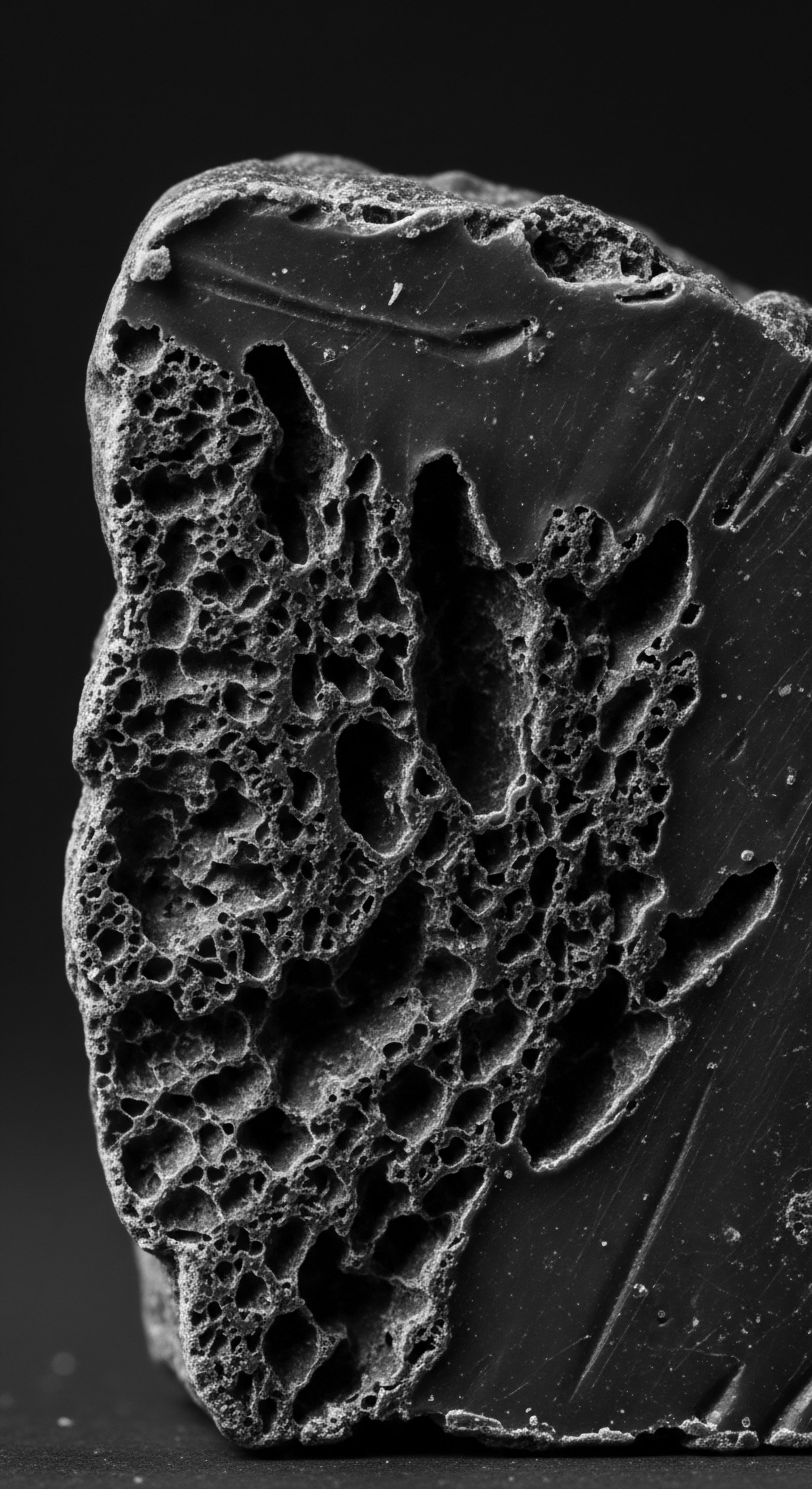
Fundamentals
The concept of Traditional Practices, within the sacred expanse of Roothea’s ‘living library,’ extends beyond mere techniques for hair adornment. It encompasses the ancient, inherited wisdom, communal rituals, and profound philosophical understandings that have guided Black and mixed-race communities for generations in their relationship with textured hair. This understanding begins not with products or modern tools, but with a reverence for the intrinsic biology of hair itself, viewing it as a living extension of identity and heritage. From the earliest communal hearths, these practices represented a holistic approach to wellbeing, where the physical care of hair was inseparable from spiritual alignment, social standing, and cultural continuity.
At its core, Traditional Practices refers to the time-honored methods of hair cultivation, cleansing, conditioning, and styling that predate contemporary commercial systems. These approaches often draw directly from the natural world, utilizing botanicals, oils, and earth-derived compounds known for their beneficial properties. Ancestral communities understood that textured hair, with its unique coil patterns and inherent fragility, required specific attention.
Their methods were not accidental; they were the result of centuries of observation, experimentation, and collective knowledge passed down through oral tradition and lived experience. The deliberate actions of detangling, moisturizing, and protecting strands were acts of care, often performed in communal settings, strengthening familial and societal bonds.
Consider the foundational meaning of these practices as understood by ancestral communities. Hair was rarely viewed in isolation; it held deep symbolic weight. It served as a visible marker of tribal affiliation, social hierarchy, marital status, and even spiritual connection. The way hair was styled could signify a rite of passage, a period of mourning, or a celebration of life.
These visual codes communicated volumes without uttering a single word, creating a shared language of identity that transcended individual expression. The collective understanding of hair as a conduit for ancestral energy and a symbol of lineage meant that its care was a sacred duty, not a superficial concern.
Early Traditional Practices were often characterized by simplicity and resourcefulness. Communities relied on what the earth provided. The use of natural clays for cleansing, plant-based oils for lubrication, and specific herbs for strengthening and growth formed the bedrock of hair maintenance.
These ingredients were not merely functional; they carried cultural significance, often harvested with respect and prepared with intention. The act of preparing these concoctions was itself a practice, a mindful engagement with the environment and a connection to generational wisdom.
Traditional Practices are the inherited wisdom, communal rituals, and philosophical understandings governing textured hair care, viewing it as a living extension of identity and heritage.
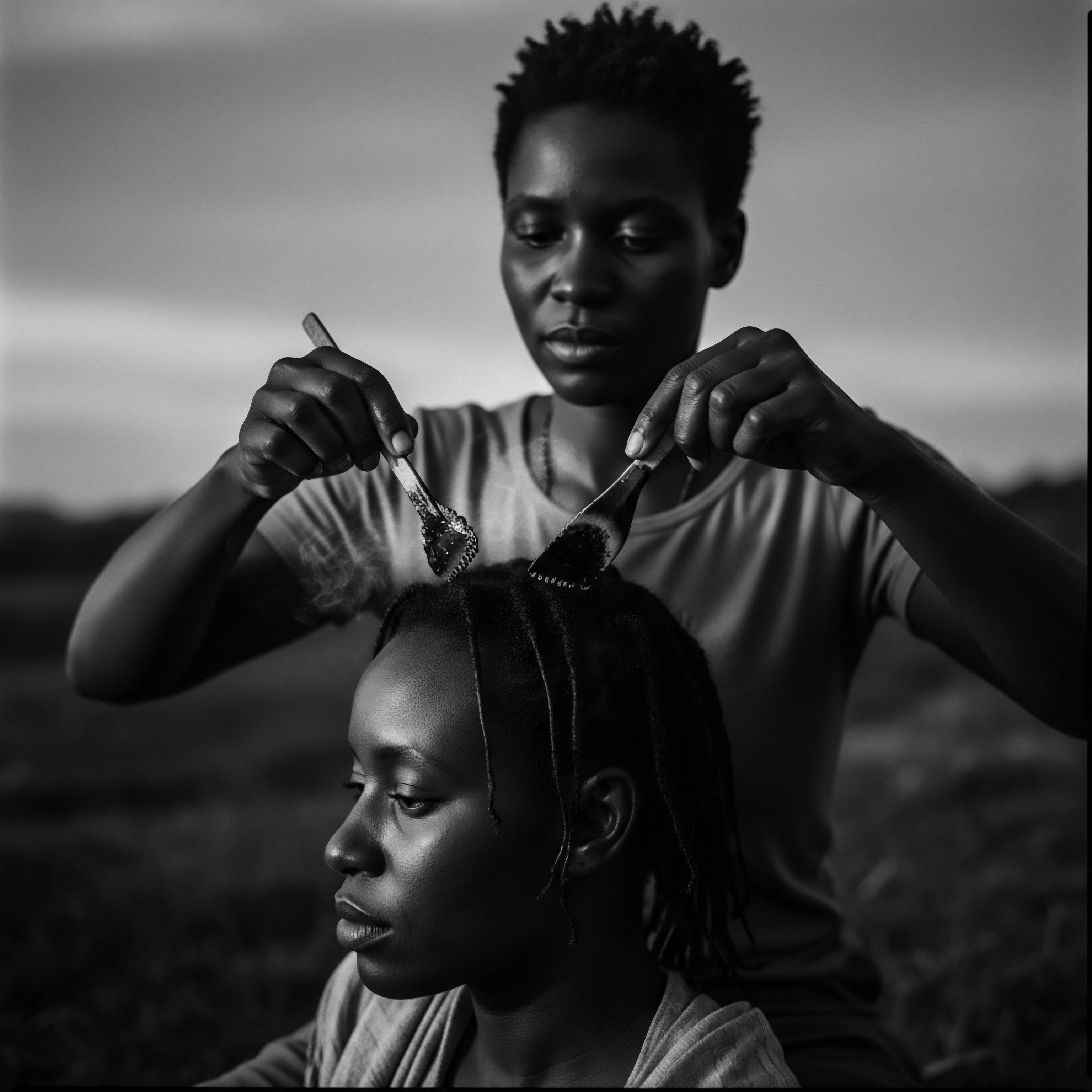
Early Foundations of Hair Care
The origins of Traditional Practices for textured hair trace back to the very dawn of human civilization in Africa. Archaeological evidence and anthropological studies point to elaborate hair styling and care routines in ancient African societies. These were not simply cosmetic; they were deeply integrated into daily life, reflecting a profound reverence for the body and its adornment. The earliest tools were simple ❉ combs carved from wood or bone, pins crafted from natural materials, and various plant extracts used for cleansing and conditioning.
- Adornment ❉ Early practices involved the use of beads, shells, and precious metals to decorate hair, indicating social status or spiritual devotion.
- Protection ❉ Styles like braids and twists offered protection from environmental elements, minimizing breakage and preserving moisture.
- Community ❉ Hair care was a communal activity, fostering intergenerational bonds and the transmission of knowledge from elder to youth.
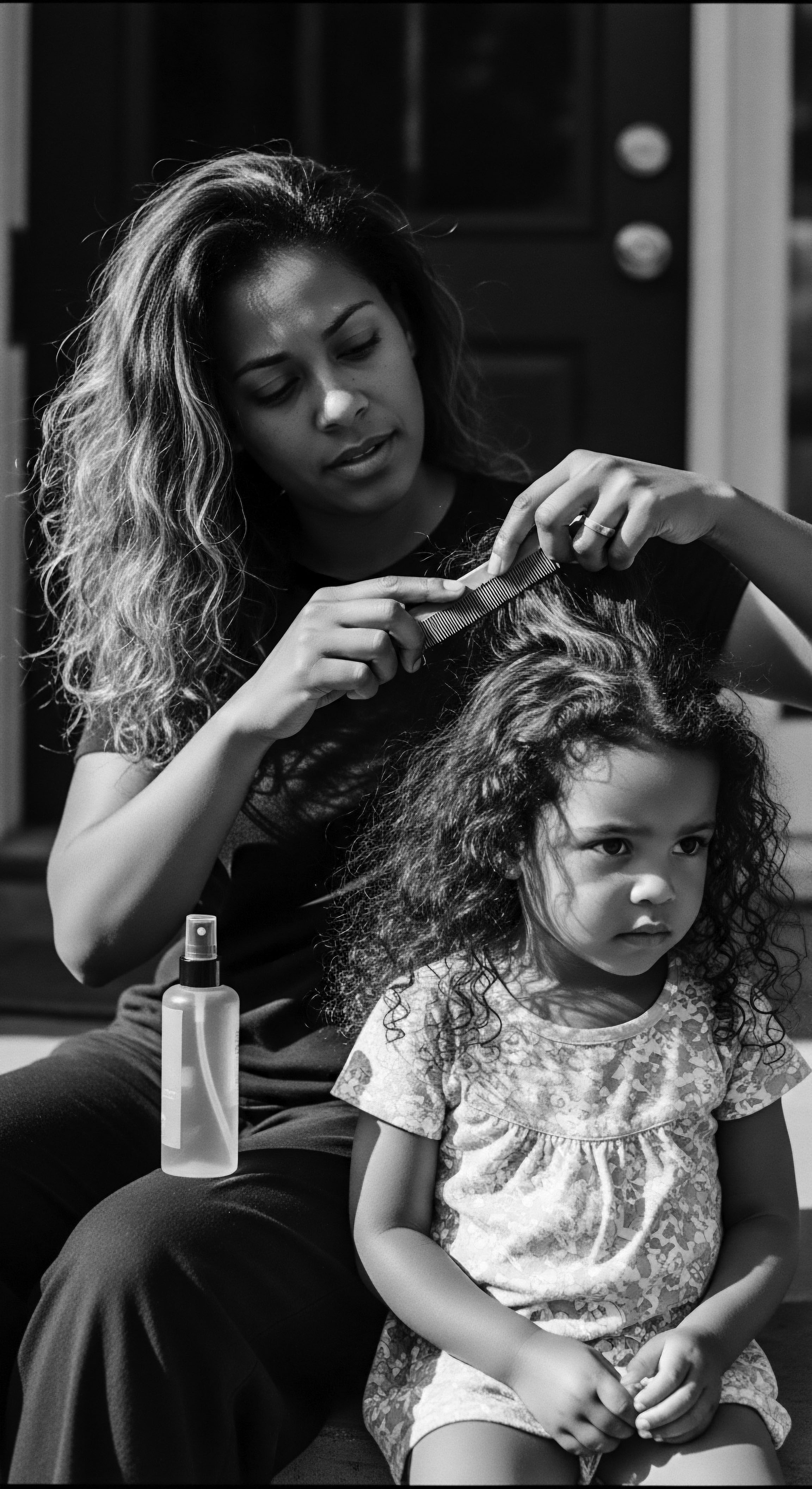
The Role of Hair in Ancestral Societies
In many ancestral African societies, hair acted as a direct link to the divine and to one’s ancestors. It was believed to be the highest point of the body, a spiritual antenna connecting the individual to the cosmos. This belief imbued hair with immense power and sanctity.
Consequently, its care was often ritualistic, performed with specific intentions and respect. The meticulous styling of hair, which could sometimes take days, became a meditative act, a dedication to self and community.
The diverse range of hair textures within African populations led to an equally diverse array of practices. Each curl pattern, from loosely wavy to tightly coiled, was recognized for its unique characteristics and treated accordingly. This intrinsic understanding of hair’s biological variability informed the development of specialized techniques, ensuring that each individual’s hair received appropriate attention. The knowledge of how to manage, protect, and adorn these varied textures was a cornerstone of community life.
The term ‘Traditional Practices’ thus refers to the earliest forms of hair care, those rooted in the wisdom of ancient civilizations. It signifies a continuous lineage of care, a legacy passed through generations, emphasizing natural ingredients, communal bonds, and a deep respect for the hair’s inherent characteristics. These practices represent the foundational understanding of textured hair as a living entity, deserving of mindful attention and reverence.
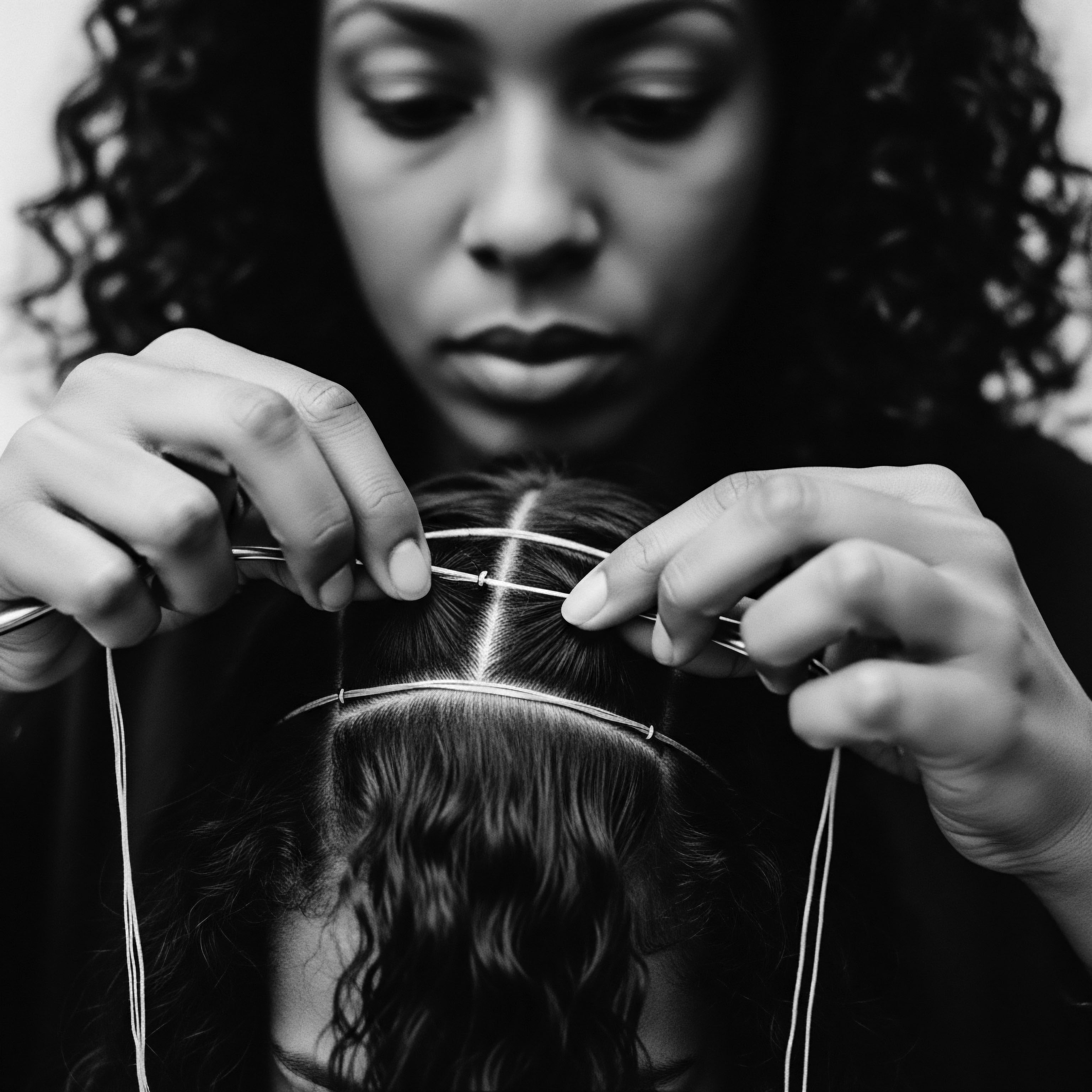
Intermediate
Moving from the foundational echoes of antiquity, the intermediate meaning of Traditional Practices for textured hair centers on its enduring journey through time, particularly how these heritage practices have been meticulously passed down, adapted, and sustained across the African diaspora. This section explores the dynamic ways ancestral knowledge, originally rooted in specific African contexts, transformed and persisted amidst profound historical shifts, such as the transatlantic slave trade and subsequent migrations. The practical applications of Traditional Practices deepened, becoming not only methods of care but also powerful statements of identity, resilience, and cultural continuity.
The continuity of Traditional Practices, even under conditions of extreme adversity, speaks to their profound significance. During the transatlantic slave trade, enslaved Africans, stripped of nearly everything, clung to their hair practices as a vital link to their homeland and their former selves. Despite brutal conditions and deliberate attempts at cultural erasure, the communal act of hair grooming persisted, often in secret.
These gatherings became clandestine spaces of solace, information exchange, and spiritual reaffirmation. The simple act of braiding a neighbor’s hair could transmit not only care but also coded messages, serving as a lifeline in an oppressive environment.
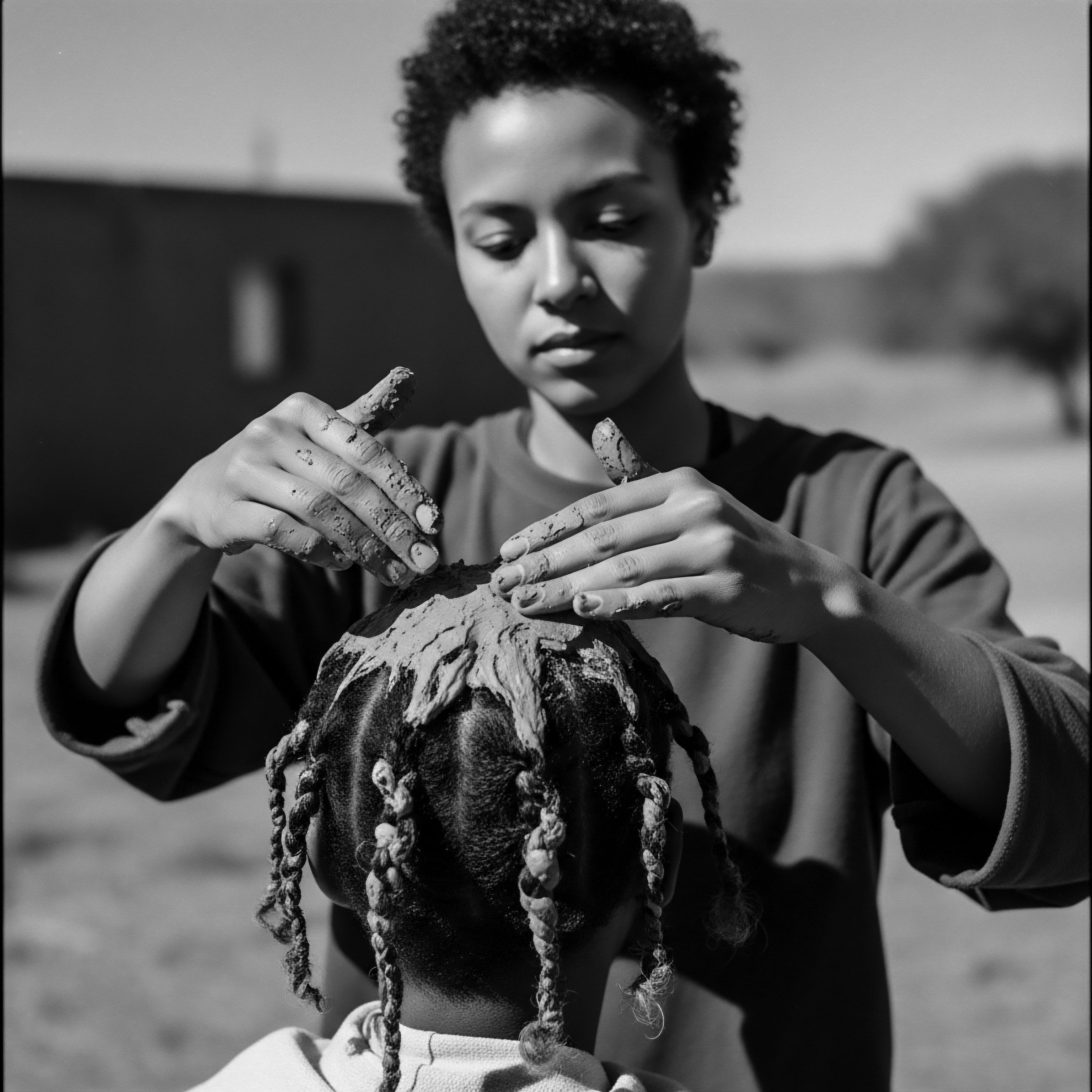
Adaptation and Resilience Across the Diaspora
As African peoples dispersed across the Americas and beyond, their hair practices adapted to new environments and limited resources. Ingredients native to Africa were often replaced with local substitutes, yet the underlying principles of moisture retention, protective styling, and communal care remained. The resourcefulness displayed in creating tools and concoctions from available materials underscored the deep-seated value placed on hair. This period saw the informal codification of new techniques, passed from elder to youth, from mother to daughter, becoming an oral tradition of hair wisdom.
The hair itself became a medium of communication and resistance. Intricate braid patterns, for instance, were not merely decorative. In some instances, as recounted in historical narratives, they were ingeniously used to conceal seeds for planting in new lands, ensuring future sustenance and a connection to agricultural heritage.
More strikingly, certain cornrow patterns were reputedly used as literal maps to guide escape routes through unfamiliar terrain, a silent cartography woven into the very strands of existence (Byrd & Tharps, 2001). This profound dual purpose — sustenance and escape — demonstrates the ingenious adaptation of Traditional Practices under duress.
Through generations, Traditional Practices have evolved from ancient rituals to vital expressions of identity and resilience, particularly within diasporic communities.
The significance of Traditional Practices expanded beyond mere maintenance; they became acts of defiance. Maintaining one’s hair in styles that honored African aesthetics, even when faced with societal pressure to conform to Eurocentric beauty standards, was a powerful assertion of selfhood and cultural pride. This period laid the groundwork for future movements where hair would become a visible symbol of political and social liberation.
Here, we begin to appreciate the nuanced interplay between biological hair needs and the socio-cultural forces shaping its care. The unique structure of textured hair, prone to dryness and breakage if not handled with consideration, necessitated the continuation of protective styles and moisturizing routines. These practical needs aligned seamlessly with the cultural imperative to preserve heritage, creating a reinforcing loop where survival and identity became intertwined with hair care.
| Traditional Practice Protective Styling (Braids, Twists) |
| Ancestral Context/Adaptation Used for practical reasons like managing hair during labor, protecting from elements, and for symbolic meaning (status, tribe). Adapted to hide seeds or maps during slavery. |
| Contemporary Relevance Still employed for hair health, length retention, and cultural expression. Offers a break from daily manipulation. |
| Traditional Practice Natural Oils/Butters |
| Ancestral Context/Adaptation Utilized plant-derived oils (e.g. shea butter, palm oil) for moisture, sheen, and scalp health in various African communities. Adapted to available local oils in new lands. |
| Contemporary Relevance Widely used today for conditioning, sealing moisture, and scalp nourishment, with many traditional ingredients now globally accessible. |
| Traditional Practice Communal Grooming |
| Ancestral Context/Adaptation Hair care as a shared activity, strengthening family and community bonds, transmitting oral traditions and techniques. |
| Contemporary Relevance Continues in homes, salons, and online communities, fostering shared knowledge and cultural connection. |
| Traditional Practice These practices, forged in historical necessity and cultural affirmation, persist as living legacies for textured hair care. |
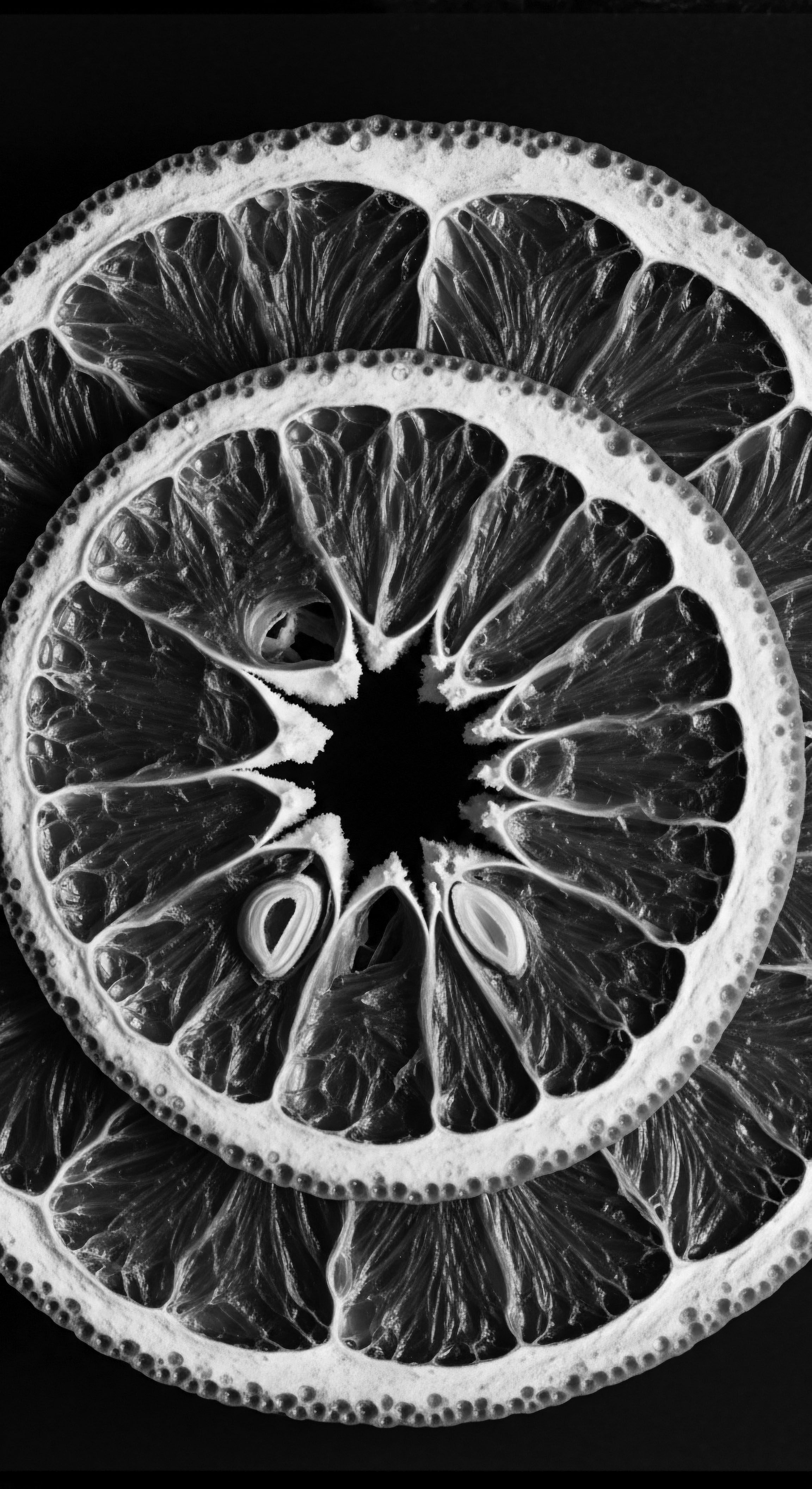
The Living Legacy of Care
The continued practice of Traditional Practices today, whether in a family home or a modern salon, carries the echoes of these historical adaptations. The very techniques employed—from cornrowing to the application of specific oils—are not merely trends; they are a living testament to ancestral ingenuity and perseverance. This layer of meaning for Traditional Practices acknowledges its evolution from ancient wisdom to a resilient cultural expression that has survived and transformed through generations. It underscores the profound link between hair care and the ongoing narrative of Black and mixed-race identity.
The Traditional Practices thus represent a continuous dialogue between past and present. They are a constant reminder of how ancestral communities navigated challenging circumstances, preserving their cultural integrity through the intimate acts of hair care. The methods passed down are not static relics; they are dynamic systems of care that adapt while retaining their fundamental spirit, a testament to the enduring power of heritage.
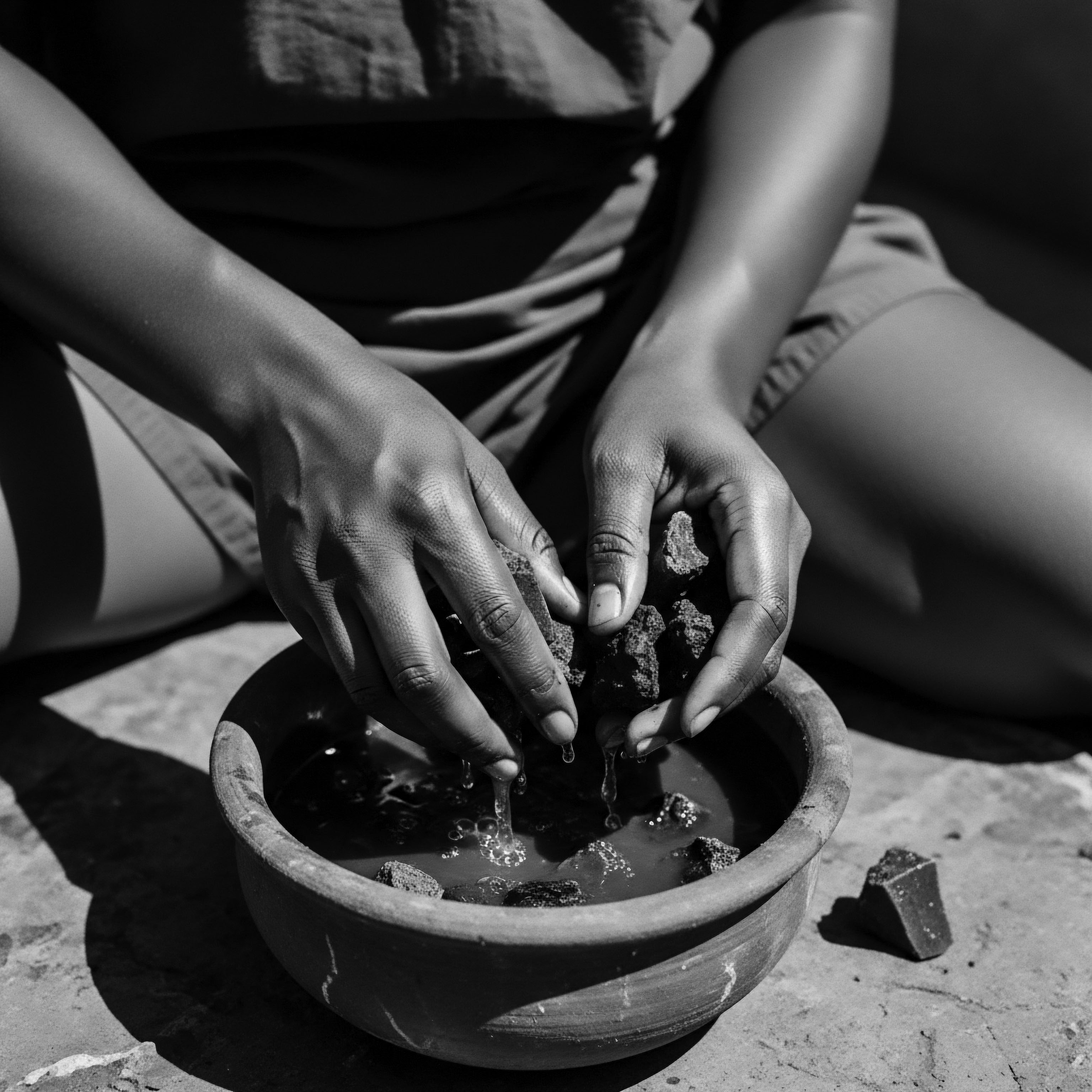
Academic
The advanced interpretation of Traditional Practices transcends simple definition, presenting a compound explication rooted in theoretical, anthropological, historical, and scientific perspectives, specifically within the context of textured hair, Black hair, and mixed-race hair heritage. It is a concept that delineates the complex interplay of biological realities, cultural constructs, and socio-political forces that have shaped the care and expression of textured hair across centuries. This advanced view posits Traditional Practices not as a static collection of techniques, but as a dynamic, adaptive system of ethnobotanical knowledge, communal pedagogy, and embodied resistance.
From an anthropological lens, Traditional Practices reveal themselves as deeply embedded systems of meaning. Hair, in many African and diasporic cultures, functions as a primary site for the inscription of identity. Its styling and care communicate intricate social codes ❉ age, marital status, spiritual beliefs, tribal affiliation, and even economic standing. These practices were, and remain, a form of non-verbal communication, a visual language understood within specific cultural contexts.
The communal nature of hair grooming, often involving extended family members, served as a pedagogical space where intergenerational knowledge was transmitted, social bonds were reinforced, and cultural values were instilled. This collective engagement ensures the perpetuation of practices, far beyond simple rote learning, making them a living archive of community memory.
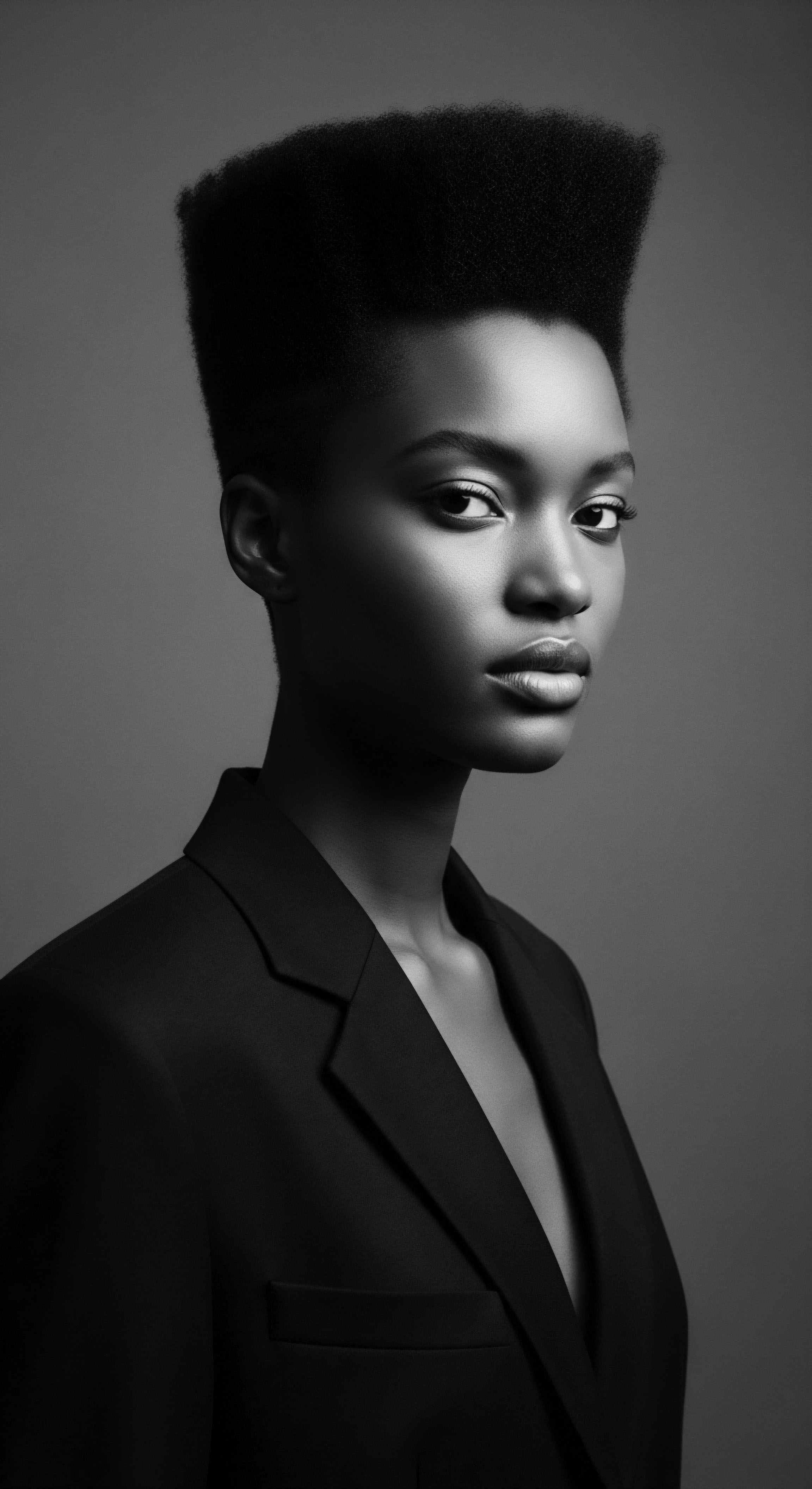
The Science of Ancestral Wisdom
Scientific validation frequently affirms the wisdom inherent in Traditional Practices. Many ancestral methods, once considered anecdotal, are now being explored for their dermatological and trichological benefits. For example, the extensive use of natural oils and butters like shea butter (from the African shea tree, Vitellaria paradoxa ) or palm oil (from Elaeis guineensis ) in traditional African hair care finds modern scientific backing for their moisturizing, protective, and emollient properties. These natural lipids help to seal the hair cuticle, reduce moisture loss, and protect the delicate protein structure of coiled strands, which are inherently more prone to dryness and mechanical damage due to their helical shape and fewer cuticle layers compared to straight hair.
A recent ethnobotanical survey of medicinal plants used for hair care in Northern Morocco identified 42 species, with a dominance of families like Lamiaceae and Rosaceae, whose plants are traditionally used for hair fortification, coloring, and addressing hair loss, demonstrating a sustained reliance on botanical solutions grounded in generational knowledge (Mouchane et al. 2023). This connection between ancient botanical wisdom and contemporary scientific understanding highlights the enduring value of these inherited systems.
Traditional Practices are a dynamic system of ethnobotanical knowledge, communal pedagogy, and embodied resistance, where science often affirms ancestral wisdom.
The application of these practices often involves techniques that minimize manipulation and heat, such as protective styling (braids, twists, locs), which reduces friction and exposure to environmental stressors. This aligns with modern hair science principles advocating for low-manipulation regimens for textured hair to preserve length and health. The ancestral understanding of hair as a delicate fiber, requiring gentle handling and consistent nourishment, forms a methodological framework that continues to inform effective textured hair care today.
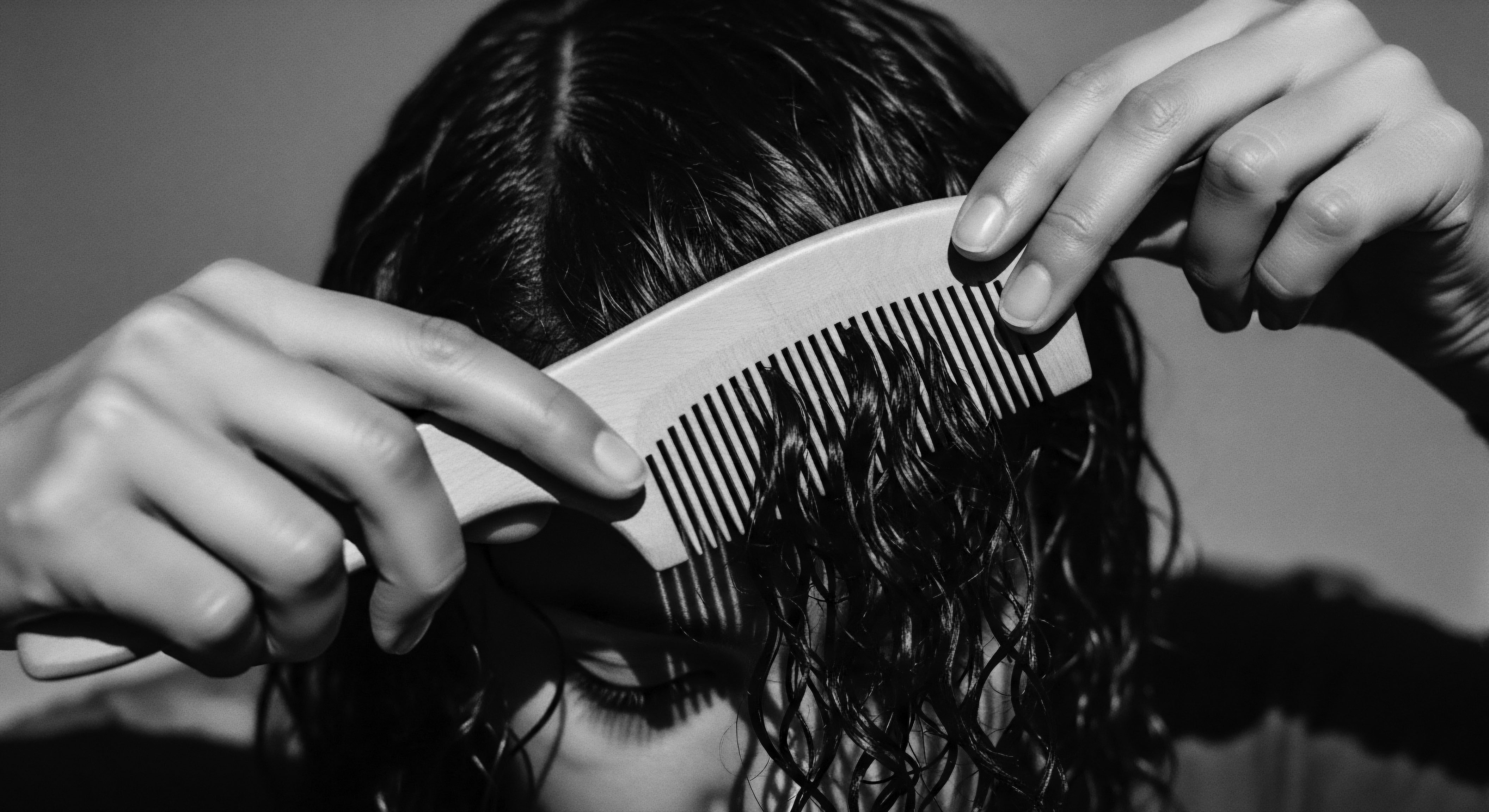
Hair as a Site of Resistance and Identity
Historically, Traditional Practices have served as potent acts of resistance against oppressive forces. During the transatlantic slave trade, when enslaved Africans were often subjected to head shaving as a means of dehumanization and cultural stripping, the clandestine maintenance of traditional hairstyles became a powerful symbol of defiance and cultural continuity. This period saw the ingenious adaptation of practices, transforming hair into a medium for survival and communication.
Consider the profound significance of cornrow braiding among enslaved African women in the Americas, particularly in regions like the Caribbean. These intricate patterns often concealed vital information and resources, moving beyond mere adornment. These woven designs reputedly carried seeds of native African crops, such as rice or okra, hidden within the braided rows, which could be planted later to sustain communities, a silent act of defiance and a preservation of agricultural heritage. Beyond sustenance, certain patterns functioned as maps, guiding escape routes to freedom, a clandestine cartography woven into the very strands of existence (Byrd & Tharps, 2001).
This specific historical example powerfully illuminates the deep connection of Traditional Practices to textured hair heritage, Black experiences, and ancestral resilience, showcasing how hair became a repository of knowledge and a tool for liberation. This strategic use of hair for survival and resistance underscores the profound socio-political dimension of Traditional Practices, transforming personal grooming into collective action.
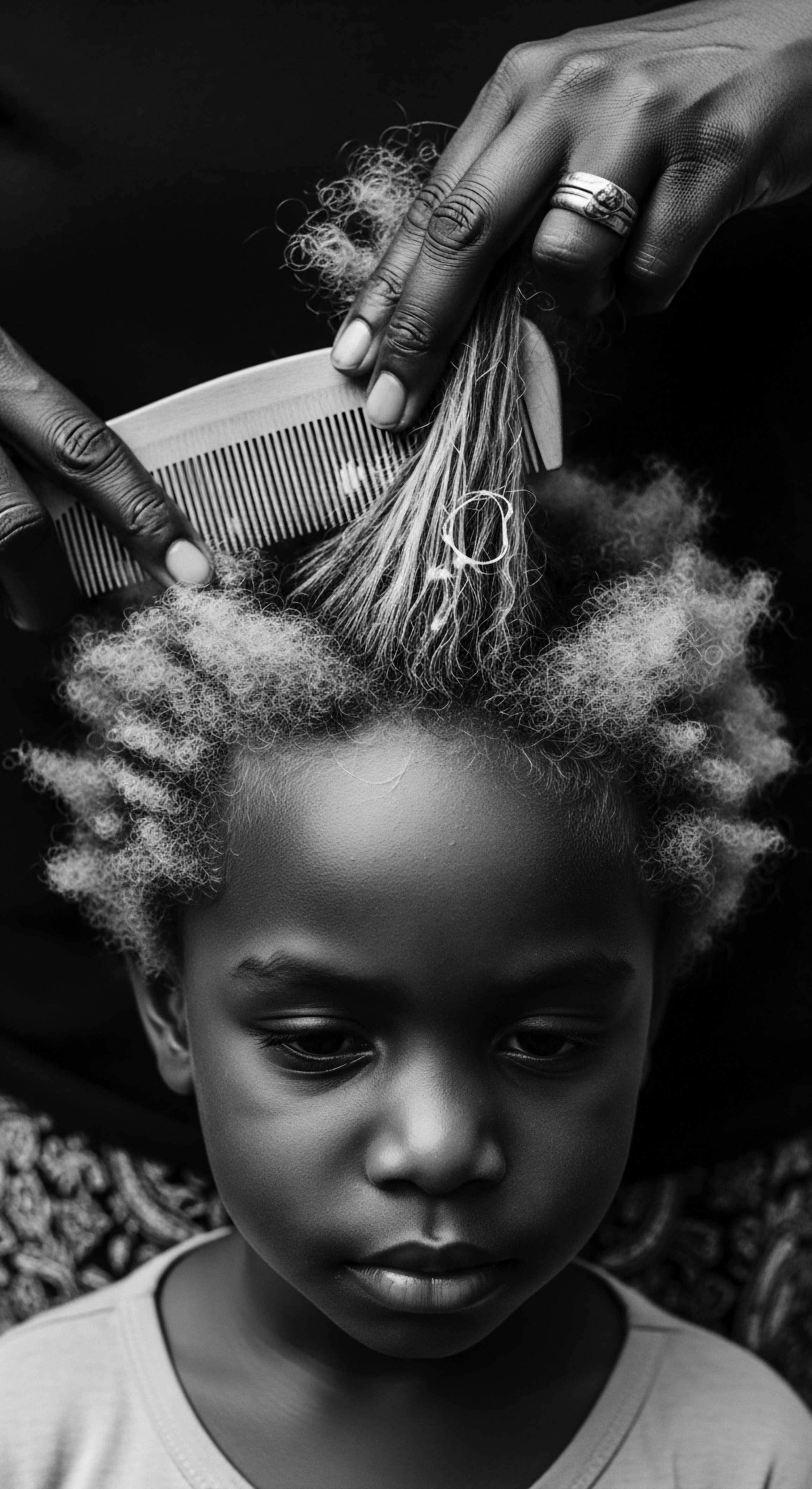
The Political Economy of Hair
The academic lens also considers the political economy surrounding Traditional Practices. Post-slavery, and continuing into the 20th century, the pressure to conform to Eurocentric beauty standards often led to the marginalization of traditional styles and the rise of hair straightening technologies. This created a bifurcated market ❉ one for “acceptable” straightened hair and another, often undervalued, for natural or traditionally styled hair.
The Natural Hair Movement of recent decades represents a powerful reclamation of Traditional Practices, not only as an aesthetic choice but as a statement of self-acceptance, cultural pride, and economic empowerment. This movement has catalyzed a shift, bringing traditional ingredients and styling methods to the forefront, creating new economic avenues within Black and mixed-race communities.
The ongoing legal battles surrounding hair discrimination (such as those leading to the CROWN Act in the United States) further underscore the academic relevance of Traditional Practices. These legislative efforts aim to protect the right to wear natural and traditional hairstyles without facing discrimination in schools or workplaces. This legal recognition highlights the enduring cultural and political weight of hair, affirming that Traditional Practices are not merely personal choices but expressions of a protected cultural heritage.
From an advanced perspective, Traditional Practices represent a sophisticated, multi-layered concept. They are a testament to the ingenuity of ancestral communities in understanding and caring for textured hair, a powerful symbol of cultural survival and resistance, and a dynamic field of study that continues to yield insights into human biology, cultural identity, and socio-historical processes. The explication of Traditional Practices therefore provides a comprehensive understanding of hair’s enduring significance within the human story, particularly for those whose strands carry the legacy of coiled beauty and ancestral wisdom.

Reflection on the Heritage of Traditional Practices
The journey through the meaning of Traditional Practices, from ancient whispers to contemporary affirmations, reveals a living legacy deeply etched into the very fibers of textured hair. It is a story of enduring wisdom, tenacious adaptation, and vibrant reclamation. For Roothea, this exploration is more than an academic exercise; it is a profound meditation on the Soul of a Strand, recognizing each coil and curl as a repository of ancestral memory and a beacon of future possibility.
The gentle hum of a grandmother’s comb, the scent of a botanical oil warmed by the sun, the quiet strength in a meticulously crafted braid—these are not relics of a bygone era. They are resonant echoes, carrying forward the spirit of those who came before, reminding us that care for our hair is care for our heritage.
This continuous thread of Traditional Practices binds generations, demonstrating how deeply hair is interwoven with identity, resilience, and cultural pride. It speaks to a knowledge system that, despite attempts at erasure, found ways to persist, to transform, and to continue nourishing not only the physical strands but also the spirit of a people. The resilience of textured hair, often seen as a challenge by external standards, is mirrored by the resilience of the practices that have sustained it through time. Each twist, each knot, each natural style is a testament to the unwavering spirit of those who understood that their hair was more than just adornment; it was a connection to their past, a statement in their present, and a promise for their future.
In this living library, the pages of Traditional Practices are perpetually turning, inviting us to listen closely to the whispers of our ancestors, to honor their ingenuity, and to carry forward the torch of self-acceptance and communal care. The meaning of these practices expands with each generation that chooses to embrace their natural texture, to learn the old ways, and to add their own unique chapter to this ongoing story. It is a celebration of identity, a declaration of belonging, and a tender act of self-love, rooted in the enduring wisdom of those who first taught us how to truly see and cherish our textured crowns.
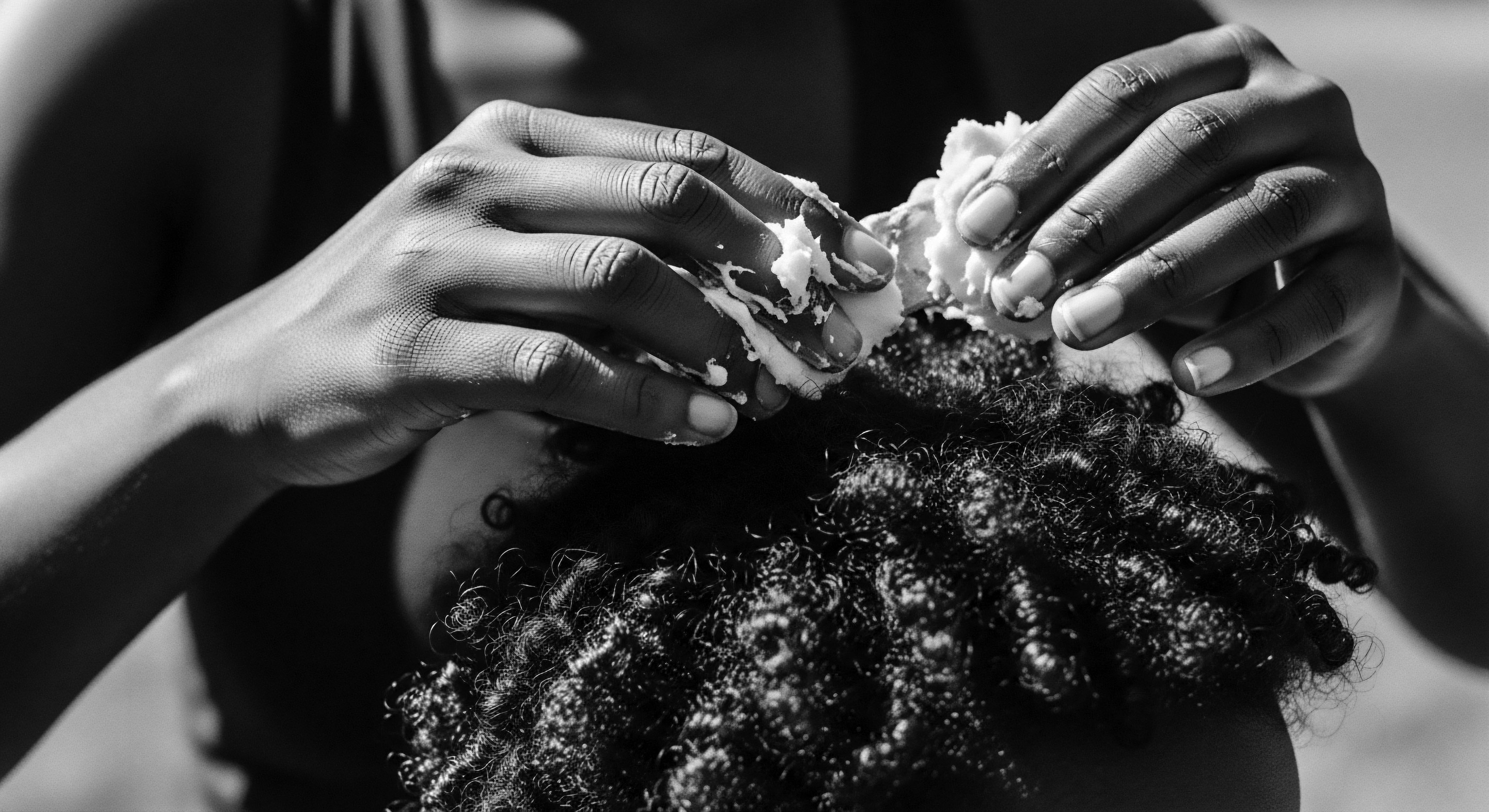
References
- Byrd, A. D. & Tharps, L. L. (2001). Hair Story ❉ Untangling the Roots of Black Hair in America. St. Martin’s Press.
- Mouchane, M. Taybi, H. Gouitaa, N. & Assem, N. (2023). Ethnobotanical Survey of Medicinal Plants used in the Treatment and Care of Hair in Karia ba Mohamed (Northern Morocco). Journal of Medicinal Plants and By-Products, 13 (1), 201-208.
- Johnson, T. A. & Bankhead, T. (2014). Hair it is ❉ Examining the Experiences of Black Women with Natural Hair. Open Journal of Social Sciences, 2 (1), 86-100.
- White, S. & White, G. (1995). Slave Hair and African-American Culture in the Eighteenth and Nineteenth Centuries. Journal of Southern History, 61 (1), 45-76.
- Caldwell, P. M. (1991). A Hair Piece ❉ Perspectives on the Intersection of Race and Gender. Duke Law Journal, 1991 (2), 365-396.
- Omotoso, S. A. (2016). Gender and Hair Politics ❉ An African Philosophical Analysis. Journal of Pan African Studies, 9 (6), 114-129.
- Essien, F. & Wood, R. (2021). ‘Beautiful’ Hair and the Cultural Violence of Identity Erasure. Social Identities, 27 (5), 629-645.
- Quampah, B. Owusu, E. Adu, V. N. F. A. & Opoku, N. A. (2023). Cornrow ❉ A Medium for Communicating Escape Strategies during the Transatlantic Slave Trade Era ❉ Evidences from Elmina Castle and Centre for National Culture in Kumasi. International Journal of Social Sciences ❉ Current and Future Research Trends, 18 (1), 127-143.
